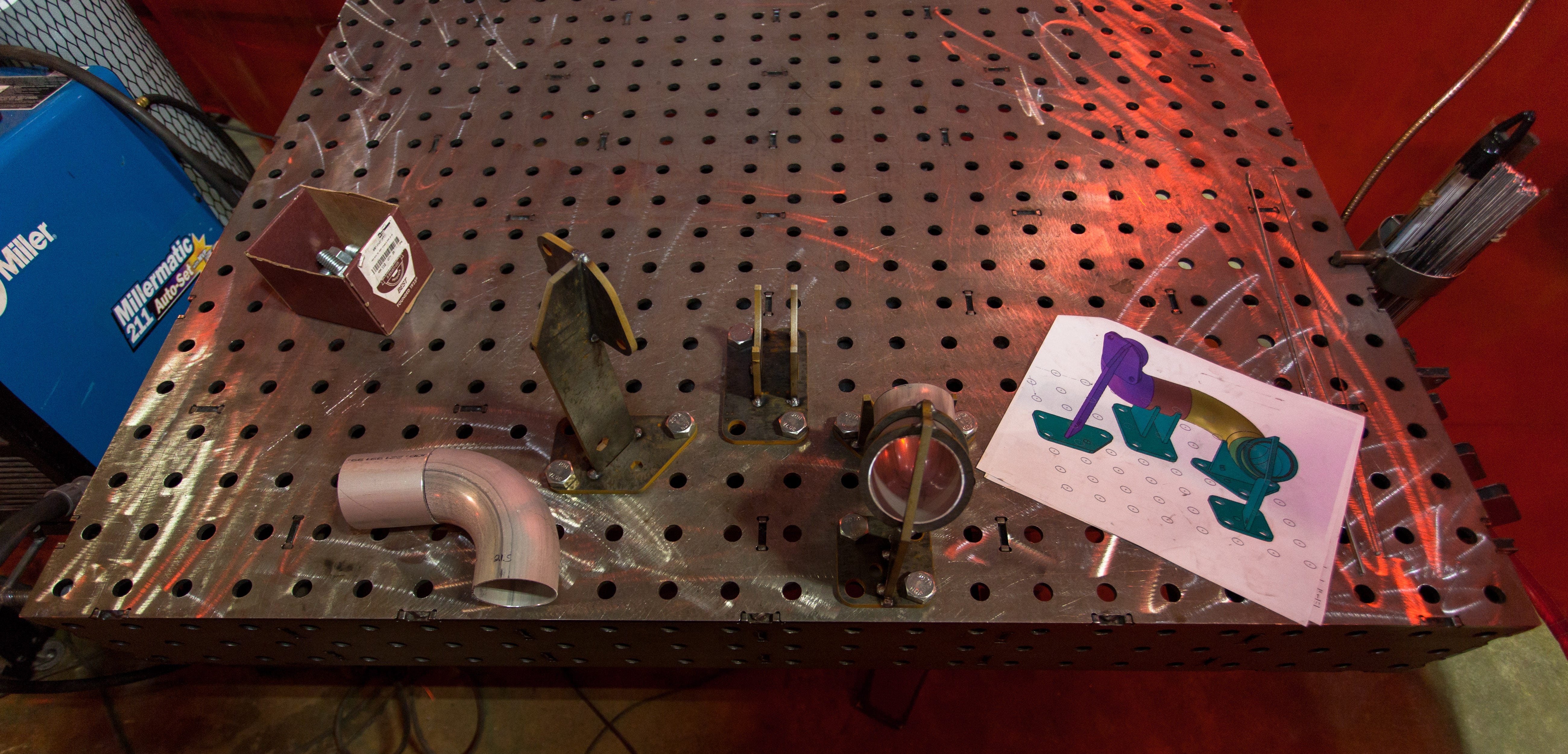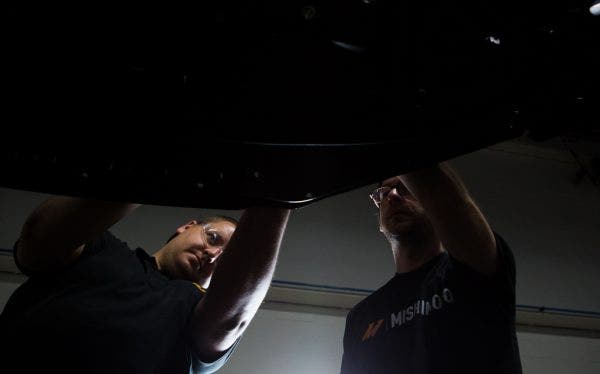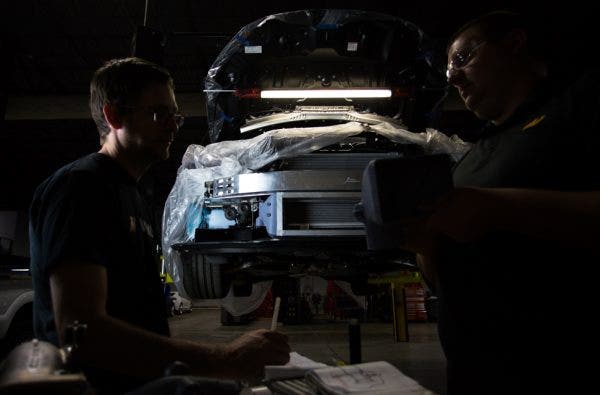
InterCOOLactic Planetary - 2017+ Honda Civic Type R Intercooler Kit R&D, Part 2 - Design Plans
The car is like an ecosystem. All the components under the hood of your Type R depend on each other to create the lovely symbiotic relationship resulting in speed. When one component falls behind in comparison to the others, the ecosystem as a whole lags. Our goal, as stated where we last left off, was to strengthen all the weak points and keep that turbocharged, aero-dripping, torque-vectoring machine carving corners and exceeding the expectations of FWD vehicles.

Extreme heat exposes a subtle weakness in your Type R. The excess heat will rob your CTR of its full potential on the track and the street, especially when we're talking about the intercooling system. Not only is the hotter air much harder to compress for effective forced induction, it can become a detriment to the rest of the ecosystem.
Honda made some sacrifices in the performance category for the sake of style. Even though the aerodynamically focused aesthetic of the FK8 incorporates plenty of gaping grilles, there are only two openings for keeping the engine cool. The top grille does provide an unobstructed path for cooler fresh air to reach the radiator, however, it only covers a small percentage of the fins. For the airflow to reach the radiator through the lower opening, it first has to pass through the intercooler. If that heat exchanger is already sizzling, those high temperatures can transfer into the coolant and turn up the heat on the K20C1.

Even though these two hot-hatches are bitter rivals, they both suffer from a serious lack of airflow to the radiator and overheating issues on the track.
But wait, isn't this supposed to be about Mishimoto's new intercooler? What does the radiator have to do with all of this? Well, simply put, heat-soaking your stock intercooler is a detriment to your speed, which starts dragging down the rest of the car. We first noticed the real-world effects that a supercooling intercooler can have on your vehicle during one of our track tests with the CTR's biggest rival, the Focus RS. Just like the RS, the Type R was designed with the track in mind, and just the same, complaints have surfaced about the rising temperatures during track days.
The good news for those of you who are looking to lower your charged air and possibly your coolant temps is we've got a plan. Dan, the mastermind behind the highly efficient Focus RS intercooler, is also on the case for your CTR. He plans to put the same amount of his engineering prowess behind this intercooler as he did with the RS.

It all starts with the core construction. The size, layout, volume, and construction of the core all play vital roles in determining just how efficiently the new intercooler will shrug off the heat generated from charging the intake airflow. We're starting by swapping out the tubes and fins and replacing them with bars and plates. Yes, this form of core construction typically adds some weight to the front end of your car, but the heat dissipation characteristics are worth the few extra pounds. If it wasn't already apparent, keeping your intercooler temps down will also keep your K20 running cool.

For more on core construction, make sure to visit our tech article covering everything you need to know about your intercooler.
In addition to making the core more robust and free flowing, we plan on increasing the volume. In fact, we're currently planning on doubling the size of the new intercooler and expanding it to fill the available space in the front of the CTR. By adding an additional 3 rows in height and an additional 2.3 inches to the depth we more or less filled all of the room to grow into.

Even without the stock comparison, you can already tell that this new intercooler is going to be much larger.

Plastic always seems to get a bad rap from us, but we don't hate it. In fact, it's an extremely useful tool when it comes to prototyping our new products.
The larger core will be useless if there's no way to properly channel the air through the bars. That's why Dan used his engineering prowess to create a brand-new design for our intercooler's end tanks. The first thing to get ditched was the plastic construction. The stock end tanks were ideal for Honda to keep production costs down and keep the CTR affordable, and are mostly acceptable for the wide range of applications it's designed for. However, to see the full potential of the CTR's intercooler, we've casted our end tanks from aluminum. In addition, we included an internal air diverter on the inlet end tank to ensure that you're getting full use out of the much larger core.

One of the main objectives in our quest for an improved intercooling system is to remove restrictions. The stock piping couplers proved to create a decent bottleneck, and were rendered obsolete by our new end-tank design.
Part of the core and end tank improvements was to remove restrictions from the system. As we discussed in the stock review, the inlet and outlet sizes on both the intercooler and the piping couplers would pose as a choke point once the boost starts to crank up. With Hondata's latest announcement of upcoming flash tuning, not only will the stock intercooler have trouble keeping up with heat dissipation, but will also struggle to feed the increased boost through the heat exchanger. With this in mind, we plan to open up both the inlet and outlet to 69mm. This new diameter will compensate for stock boost as well as the increased pressures from a tune, without compromising any system pressure.

It might seem like we don't like plastic here at Mishimoto. It's actually quite the opposite. Our 3D printers make it easy for us to churn out tangible designs and vastly cut down on the development time.
On our intercooler projects, we typically make sure that our new design will mate up with the stock piping. However, the CTR is no typical Civic, and in order to fully eliminate the restrictions in the pipe couplers, we decided to eliminate the pipes altogether. Unfortunately, we haven't developed the pipe-less intercooler, but we're planning on offering this as a full intercooling system overhaul. Stay tuned for what's to come in the world of piping!

Sparks have already been flying on the piping for this kit. Keep an eye out for what our master fabricator, Mike, welded together.
Thanks for Reading!
-Nick











